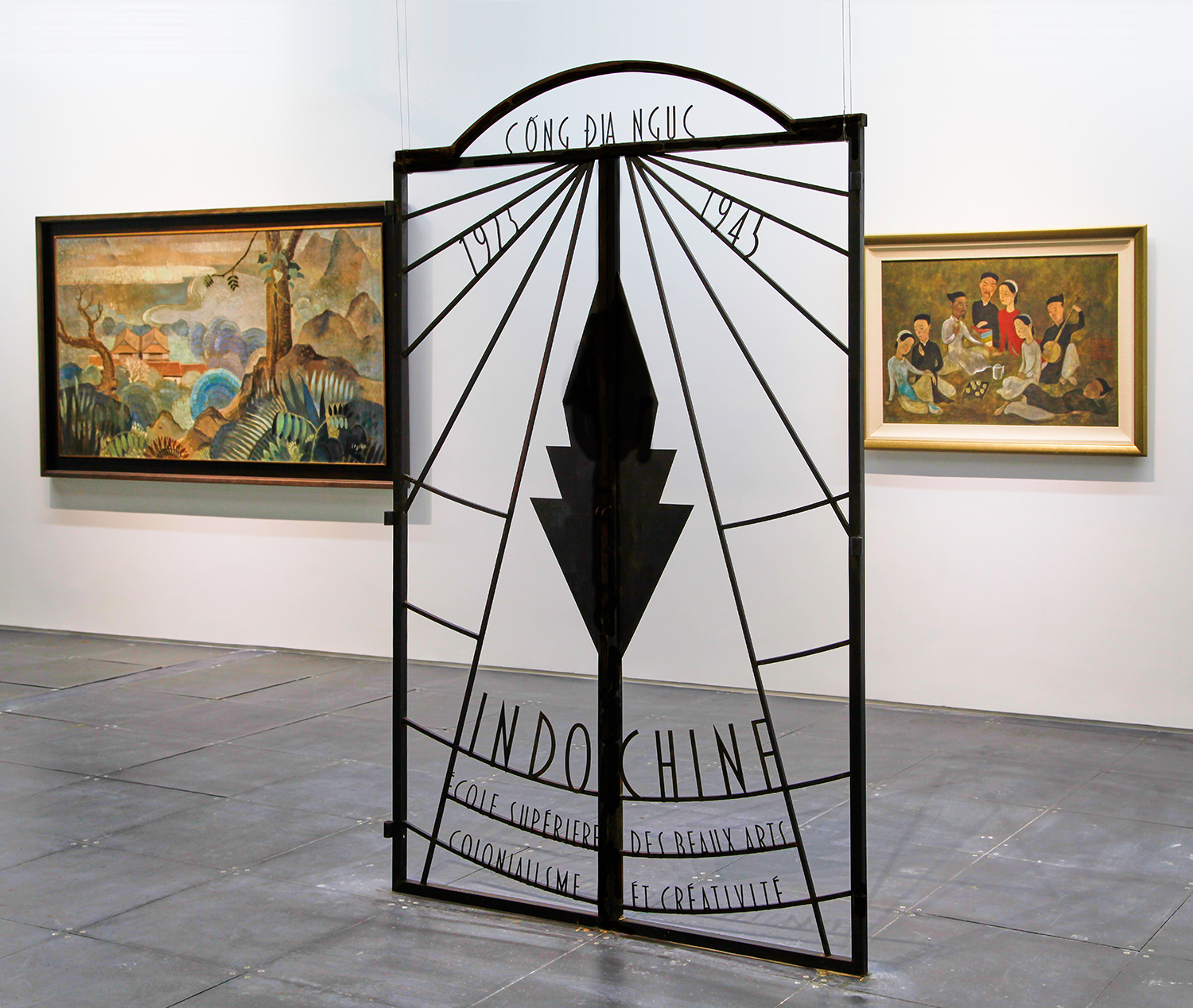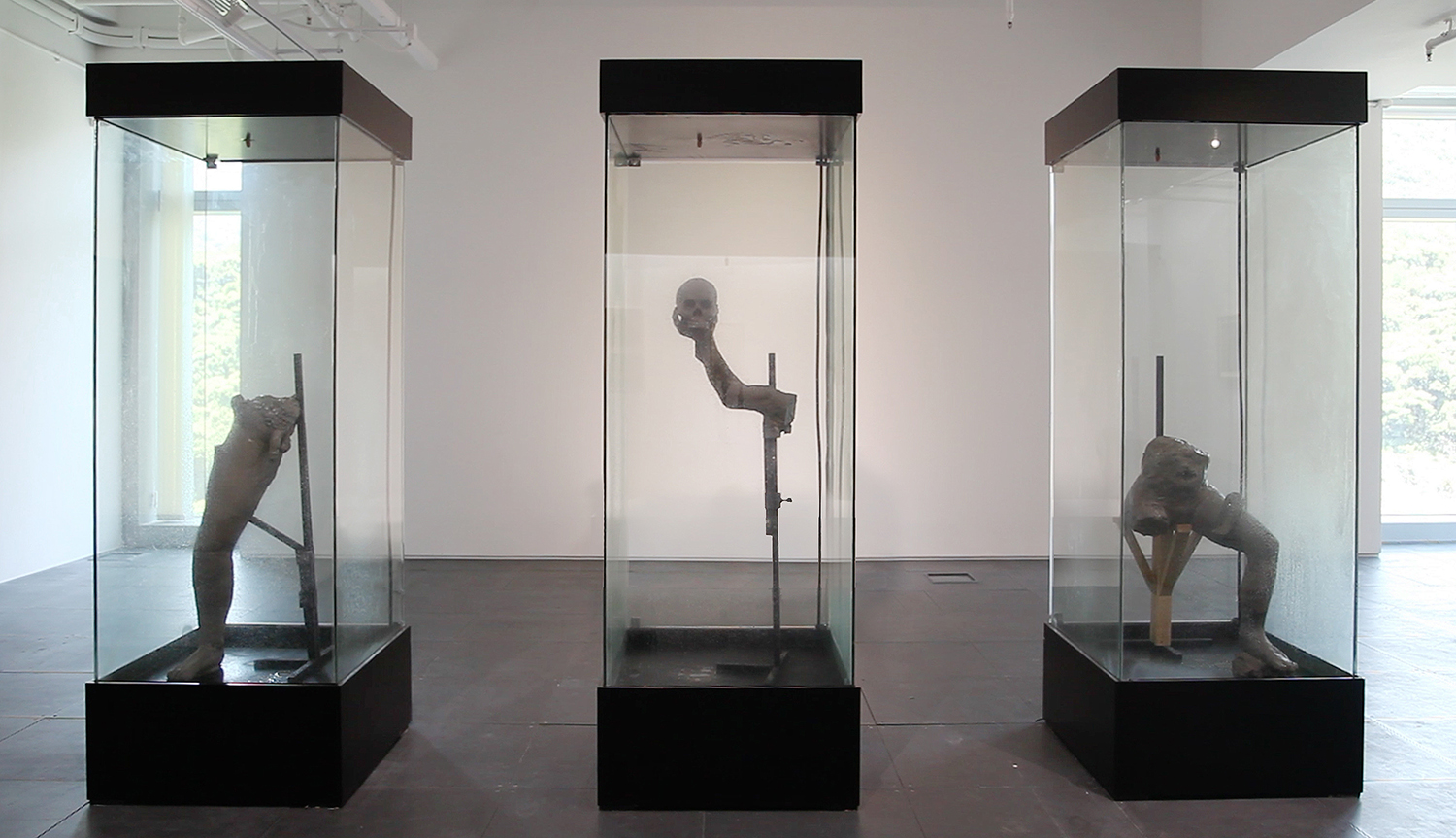Shows
Richard Streitmatter-Tran’s “Departures”



De Sarthe Gallery’s Hong Kong outpost presented “Departures,” a solo show by Vietnamese artist Richard Streitmatter-Tran that also exhibited artworks by 20th-century modernists from his homeland. Born in 1972 in Bien Hoa, a city situated about 30 kilometers east of Ho Chi Minh City, Streitmatter-Tran’s solo and collaborative works have been exhibited internationally, notably in Palais de Tokyo in 2015 and the 52nd Venice Biennale ten years ago. But this was Streitmatter-Tran’s debut in Hong Kong, and also the first time that a Vietnamese collection of such a scale—with 55 art-pieces in total on show—was presented in the city.
Upon entering de Sarthe’s Wong Chuk Hang space, it was impossible to miss a brown tower-like structure reminiscent of Cambodia’s Angkor Wat. At 92 centimeters in height, the installation’s familiar silhouette captivated the attention of visitors stumbling across Streitmatter-Tran’s works for the first time; many leaned in to examine its details. The work, titled Excavation/Elevation (After Champa) (2017), is modeled after a temple from the Champa Kingdom of Vietnam, which was established in the 2nd century and lasted until the 1800s. Its frame is made from brown fondant icing, held together by Styrofoam within. The Champa-inspired design represents the ancient culture of Vietnam, while its primary material, fondant, is used to depict the artwork as a consumable cake. Here, Streitmatter-Tran subtly hints that just as consumable cakes are met with a fate of being commodified, appreciated and then ravaged, so are cultures.
The French colonial rule of Vietnam, referred to as French Indochina, that lasted from 1887 to 1954 was a period that left many traces still seen in the façade of modern Vietnam today. Streitmatter-Tran cleverly incorporated this into his work The Gates of Hell (Cong Dia Nguc) (2017), a haunting piece that stood in the center of the gallery. At two meters in height, the iron structure is a gate in French art-deco-style that was prevalent in Vietnam during the 1920s and 30s. A symbol of artistic triumph, the gate is inscribed with the words “École Supérieure des Beaux Arts” and “Indo Chine,” as a tribute to a renowned fine arts school that existed in Hanoi from 1925 to 1945. Many of Vietnam’s early modern artists attended the institution. However, as the title suggests, the gate is not merely a celebration of Vietnam’s artistic talents. At its top are the words “Cong Dia Nguc,” which translate as “The Gates of Hell,” alluding to the dark side of the colonial period. Here, Streitmatter-Tran presents a two-faceted sentiment , highlighting the complexity of colonialism.


The concept of beauty was directly challenged in Vital Matter (2017), three unfired clay sculptures that stand within vitrines. The sculptures were sprayed with water at regular intervals throughout the exhibition so that their shapes are constantly changing. Modern Vietnamese ink and silk figurative paintings were featured nearby, and the artist makes use of this contrast to take a jab at society’s perceptions of beauty over time.
The critical lens through which Streitmatter-Tran observes culture, colonialism and beauty is cleverly articulated through his art; the past of colonialism, the future of culture, and the eternality of beauty are each thought out and expressed through the artist’s works, beckoning us to reexamine stories that might have been neglected. It is through this exploration by Streitmatter-Tran that we are able to revisit notions of culture, colonialism and beauty, and even take on a new outlook when experiencing idiomatic expressions that are rooted in history.

Richard Streitmatter-Tran's “Departures” is on view at de Sarthe Gallery, Hong Kong, until July 8, 2017.







